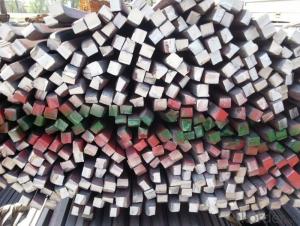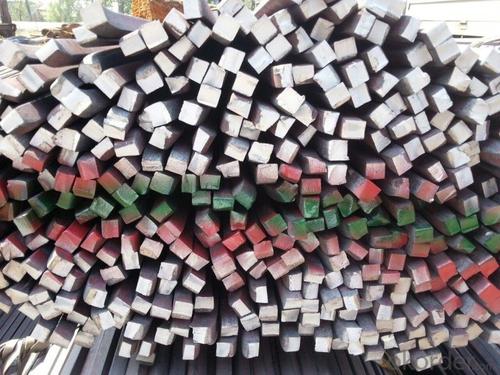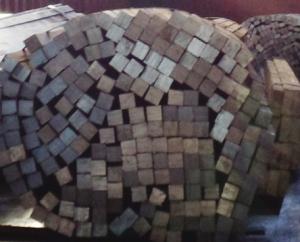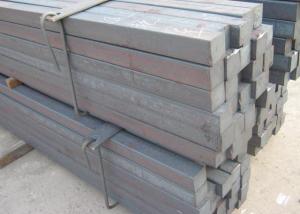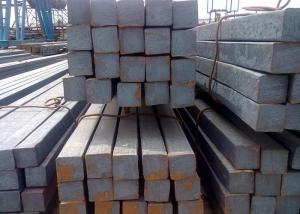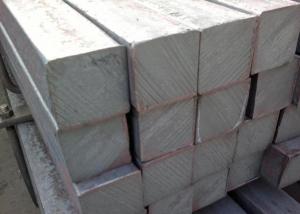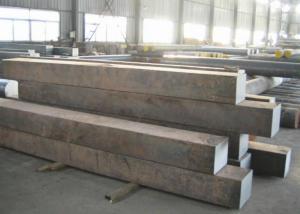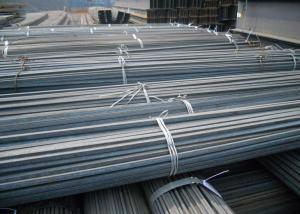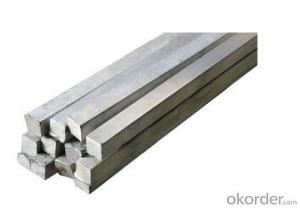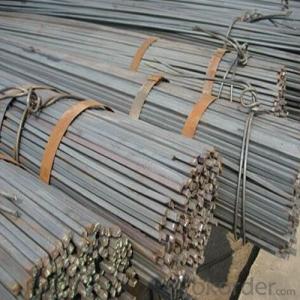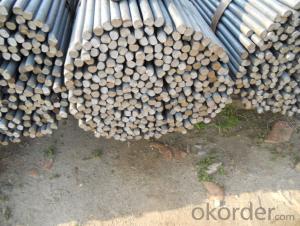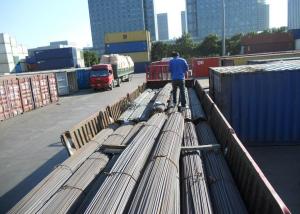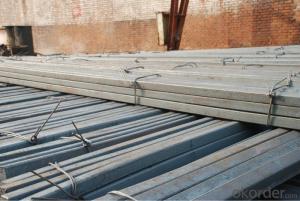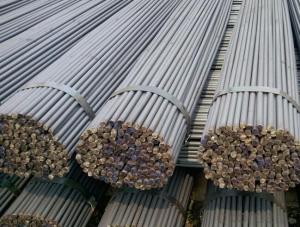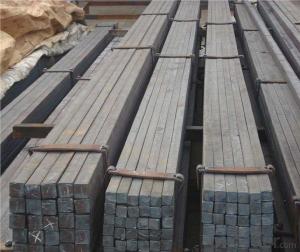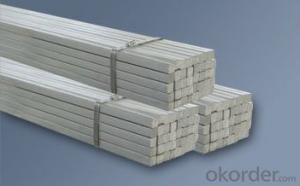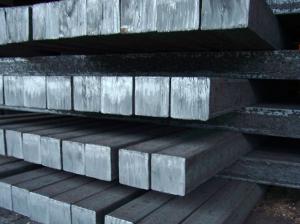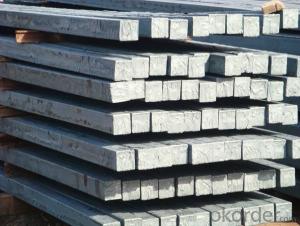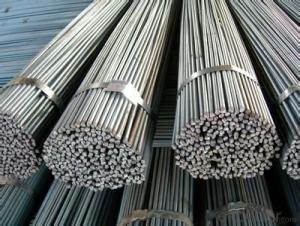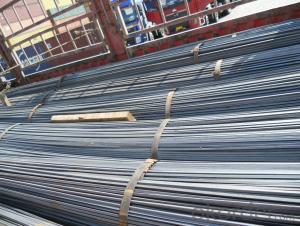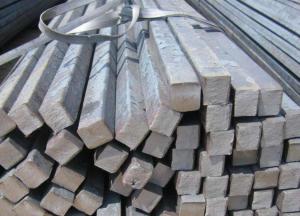Low Carbon Hot Rolled Steel Square Bar in Bundle
- Loading Port:
- China main port
- Payment Terms:
- TT OR LC
- Min Order Qty:
- 100 m.t.
- Supply Capability:
- 5000 m.t./month
OKorder Service Pledge
OKorder Financial Service
You Might Also Like
Product Description:
OKorder is offering Low Carbon Hot Rolled Steel Square Bar in Bundle at great prices with worldwide shipping. Our supplier is a world-class manufacturer of steel, with our products utilized the world over. OKorder annually supplies products to African, South American and Asian markets. We provide quotations within 24 hours of receiving an inquiry and guarantee competitive prices.
Product Applications:
Low Carbon Hot Rolled Steel Square Bar in Bundle are ideal for structural applications and are widely used in the construction of buildings and bridges, and the manufacturing, petrochemical, and transportation industries.
Product Advantages:
OKorder's Low Carbon Hot Rolled Steel Square Bar in Bundle are durable, strong, and wide variety of sizes.
Main Product Features:
· Premium quality
· Prompt delivery & seaworthy packing (30 days after receiving deposit)
· Can be recycled and reused
· Mill test certification
· Professional Service
· Competitive pricing
Product Specifications:
Manufacture: Hot rolled
Grade: Q195 – 235
Certificates: ISO, SGS, BV, CIQ
Length: 6m – 12m, as per customer request
Packaging: Export packing, nude packing, bundled
| SQUARE BAR | |
| SIZE a(mm) | theoretical kg/m |
| 5.5 | 0.237 |
| 6 | 0.283 |
| 7 | 0.385 |
| 8 | 0.502 |
| 9 | 0.636 |
| 10 | 0.785 |
| 11 | 0.95 |
| 12 | 1.13 |
| 13 | 1.33 |
| 14 | 1.54 |
| 15 | 1.77 |
| 16 | 2.01 |
| 17 | 2.27 |
| 18 | 2.54 |
| 19 | 2.83 |
| 20 | 3.14 |
| 21 | 3.46 |
| 22 | 3.8 |
| 24 | 4.52 |
| 25 | 4.91 |
| 26 | 5.31 |
| 28 | 6.15 |
| 30 | 7.06 |
| 32 | 8.04 |
| 34 | 9.07 |
| 36 | 10.2 |
| 38 | 11.3 |
| 40 | 12.6 |
| 42 | 13.8 |
| 45 | 15.9 |
| 48 | 18.1 |
| 50 | 19.6 |
| 53 | 22 |
| 56 | 24.6 |
| 60 | 28.3 |
| 63 | 31.2 |
| 65 | 33.2 |
| 70 | 38.5 |
| 75 | 44.2 |
| 80 | 50.2 |
| 85 | 56.7 |
| 90 | 63.6 |
| 95 | 70.8 |
| 100 | 78.5 |
FAQ:
Q1: Why buy Materials & Equipment from OKorder.com?
A1: All products offered byOKorder.com are carefully selected from China's most reliable manufacturing enterprises. Through its ISO certifications, OKorder.com adheres to the highest standards and a commitment to supply chain safety and customer satisfaction.
Q2: How do we guarantee the quality of our products?
A2: We have established an advanced quality management system which conducts strict quality tests at every step, from raw materials to the final product. At the same time, we provide extensive follow-up service assurances as required.
Q3: How soon can we receive the product after purchase?
A3: Within three days of placing an order, we will arrange production. The normal sizes with the normal grade can be produced within one month. The specific shipping date is dependent upon international and government factors, the delivery to international main port about 45-60days.
Images:
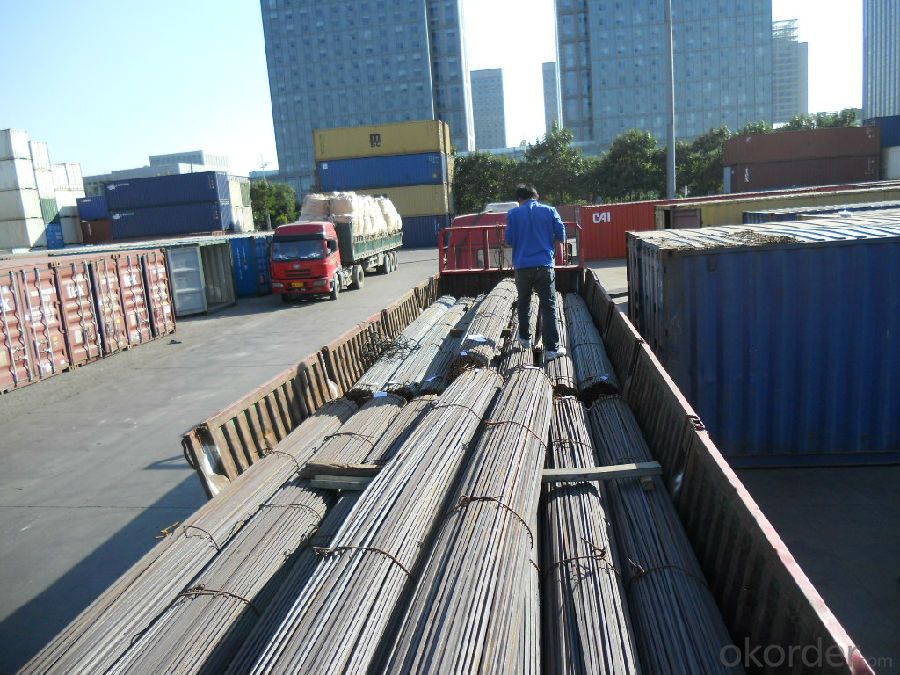
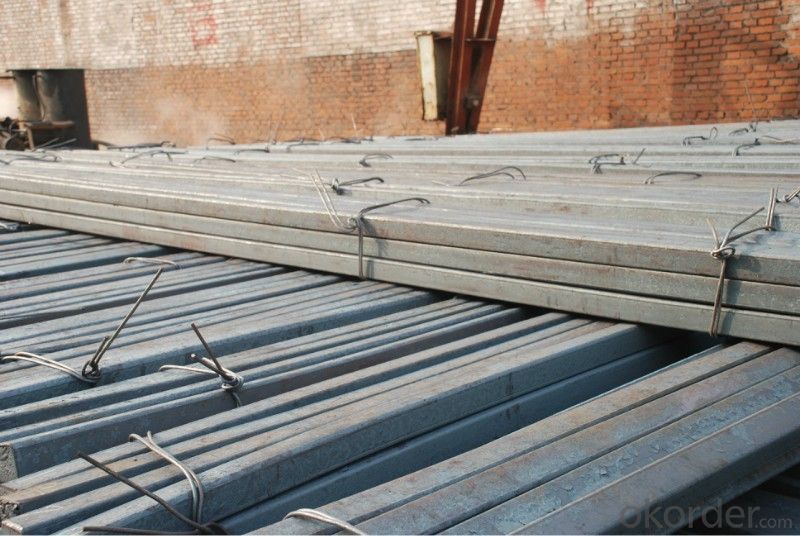
- Q: How do you use a steel square to measure and mark 60-degree angles?
- To measure and mark 60-degree angles using a steel square, first, align one edge of the square with the base of the angle you want to measure. Then, rotate the square until the adjacent side is aligned with one of the square's edges. Finally, mark the point where the other edge of the square intersects with the angle's base.
- Q: Can a steel square be used for outdoor kitchen layout and construction?
- Certainly! Outdoor kitchen layout and construction can indeed make use of a steel square. These versatile tools excel at measuring and laying out angles, guaranteeing precision in construction. Additionally, their durability and resistance to weather render them ideal for outdoor applications. Whether you require precise marking and measuring of right angles for countertops, cabinets, or other elements, or the assurance of proper alignment and squareness throughout the construction process, a steel square proves invaluable for outdoor kitchen projects.
- Q: How do you use a steel square to create cove cuts?
- To use a steel square to create cove cuts, you can follow these steps: 1. Begin by marking the desired cove shape on the workpiece, using a pencil or marking tool. 2. Position the steel square on the marked line, aligning one edge of the square with the curve. 3. Hold the square firmly in place and use a pencil or scribe to trace along the inside edge of the square, transferring the curve onto the workpiece. 4. Repeat this process at different points along the curve to ensure accuracy and smoothness. 5. Once the curve is traced, you can use a jigsaw, coping saw, or any other suitable cutting tool to carefully cut along the marked line, following the curve. 6. After the cut is complete, you may need to smooth and refine the cove using sandpaper, a file, or other finishing tools, depending on the desired result. Remember to take your time, use caution, and always wear appropriate safety gear when working with tools and machinery.
- Q: Can a steel square be used for checking the plumbness of poles?
- Yes, a steel square can be used for checking the plumbness of poles. A steel square is a versatile tool that is commonly used in carpentry and construction. It has a right angle shape, with a long blade and a shorter tongue, which allows for accurate measurements and checks for squareness. To check the plumbness of a pole, you can place the steel square against the side of the pole and ensure that it is perfectly vertical. By aligning the square with the pole, you can easily determine if the pole is leaning or not. The steel square provides a reliable and convenient method for checking plumbness in various applications.
- Q: Can a steel square be used for checking the squareness of a wall frame?
- Yes, a steel square can be used for checking the squareness of a wall frame.
- Q: Can a steel square be used for window and door framing?
- Window and door framing can indeed utilize a steel square. These squares, which are also referred to as framing squares or carpenter squares, serve as versatile tools that are commonly employed in construction and carpentry. They possess the capacity to provide accurate and square measurements and angles, thereby rendering them suitable for a variety of framing tasks, including window and door installation. By virtue of their robust construction and precise markings, steel squares contribute to ensuring that windows and doors are properly aligned and securely fitted within the frame. However, it is worth noting that specific aspects of window and door framing may necessitate other specialized tools and techniques, such as shimming and leveling.
- Q: How do you use a steel square for marking roof valley angles?
- In order to mark roof valley angles using a steel square, there are a few simple steps that need to be followed. Firstly, it is important to ensure that the steel square is clean and free from any dirt or debris that could affect its accuracy. Next, position the steel square against the roof valley in the desired location, ensuring that it is properly aligned with both the edge of the roof and the valley line. Once the steel square is in place, use a pencil or marker to trace along the edge of the steel square onto the roof surface. This will create a clear marking indicating the angle of the roof valley. If there is a need to mark multiple angles along the valley, simply adjust the position of the steel square accordingly and repeat the tracing process. Using a steel square to mark roof valley angles is a precise and effective method, guaranteeing accuracy and consistency in the markings. It is crucial to take the time to double-check the measurements to ensure that the markings are correct before proceeding with any roofing work.
- Q: What are some common techniques for using a steel square in roofing?
- Some common techniques for using a steel square in roofing include determining roof pitch, measuring and marking angles for cuts, and laying out roof rafters and trusses. The steel square is a versatile tool that helps roofers ensure accurate and precise measurements and angles during the roofing process.
- Q: Are there any limitations to using a steel square?
- The use of a steel square does have its limitations. To begin with, the size and weight of a steel square can pose challenges when handling it, particularly for those with limited strength or dexterity. This can make it tough to use the square for extended periods or for intricate projects that require precise measurements. Additionally, steel squares are primarily designed for right angles and straight measurements, which means they may not be suitable for projects involving angles other than 90 degrees. In such cases, achieving accurate angles may require the use of additional tools or techniques. Furthermore, if not properly maintained, steel squares can be susceptible to rust and corrosion. This can affect their accuracy over time, necessitating regular cleaning and maintenance to ensure reliable measurements. Lastly, steel squares may not be appropriate for certain materials or surfaces. For instance, utilizing a steel square on delicate or easily scratched materials like polished wood or glass could potentially cause damage. In such instances, alternative measuring tools or protective measures may need to be employed. Despite these limitations, steel squares continue to be widely used and valued for their strength, durability, and accuracy in numerous woodworking, metalworking, and construction projects. However, it is crucial to be aware of their limitations and adapt accordingly when necessary.
- Q: How do you use a steel square to find the square footage of a roof?
- To use a steel square to find the square footage of a roof, you will need to follow a few steps. First, you need to determine the pitch or slope of the roof. The pitch is usually given as a ratio, such as 4:12 or 6:12, which means for every 12 inches of horizontal run, the roof rises 4 or 6 inches vertically. Next, you will need to measure the length and width of the roof. Use the steel square as a measuring tool by placing one edge on the roof's surface and the other edge against the vertical surface, such as a wall or fascia board. This will allow you to measure the length and width accurately. Once you have these measurements, you can multiply the length and width to calculate the square footage of the roof. However, keep in mind that with a sloped roof, you need to take the pitch into account. To do this, multiply the length by the width, and then multiply the result by the pitch factor. The pitch factor is found by dividing the vertical rise by the horizontal run. For example, if the pitch is 4:12, the pitch factor is 4/12, which simplifies to 1/3. Finally, divide the total square footage by 100 to convert it to roofing squares. Roofing squares are a common unit of measurement in the roofing industry, where one square equals 100 square feet. In summary, using a steel square to find the square footage of a roof involves measuring the length and width of the roof, considering the pitch or slope, multiplying the measurements, and then converting the result to roofing squares if necessary.
Send your message to us
Low Carbon Hot Rolled Steel Square Bar in Bundle
- Loading Port:
- China main port
- Payment Terms:
- TT OR LC
- Min Order Qty:
- 100 m.t.
- Supply Capability:
- 5000 m.t./month
OKorder Service Pledge
OKorder Financial Service
Similar products
Hot products
Hot Searches
Related keywords
